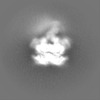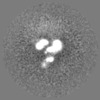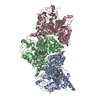登録情報 データベース : EMDB / ID : EMD-21827タイトル Human p97 in complex with Npl4/Ufd1 and polyubiquitinated Ub-Eos (State I) Human p97 in complex with Npl4/Ufd1 and polyubiquitinated Ub-Eos (State I) 複合体 : Human p97 in complex with Npl4/Ufd1 and polyubiquitinated Ub-Eos機能・相同性 分子機能 ドメイン・相同性 構成要素
/ / / / / / / / / / / / / / / / / / / / / / / / / / / / / / / / / / / / / / / / / / / / / / / / / / / / / / / / / / / / / / / / / / / / / / / / / / / / / / / / / / / / / / / / / / / / / / / / / / / / / / / / / / / / / / / / / / / / / / / / / / / / / / / / / / / / / / / 生物種 Homo sapiens (ヒト)手法 / / 解像度 : 4.2 Å Pan M / Yu Y / Liu L / Zhao M ジャーナル : Nat Commun / 年 : 2021タイトル : Seesaw conformations of Npl4 in the human p97 complex and the inhibitory mechanism of a disulfiram derivative.著者 : Man Pan / Qingyun Zheng / Yuanyuan Yu / Huasong Ai / Yuan Xie / Xin Zeng / Chu Wang / Lei Liu / Minglei Zhao / 要旨 : p97, also known as valosin-containing protein (VCP) or Cdc48, plays a central role in cellular protein homeostasis. Human p97 mutations are associated with several neurodegenerative diseases. ... p97, also known as valosin-containing protein (VCP) or Cdc48, plays a central role in cellular protein homeostasis. Human p97 mutations are associated with several neurodegenerative diseases. Targeting p97 and its cofactors is a strategy for cancer drug development. Despite significant structural insights into the fungal homolog Cdc48, little is known about how human p97 interacts with its cofactors. Recently, the anti-alcohol abuse drug disulfiram was found to target cancer through Npl4, a cofactor of p97, but the molecular mechanism remains elusive. Here, using single-particle cryo-electron microscopy (cryo-EM), we uncovered three Npl4 conformational states in complex with human p97 before ATP hydrolysis. The motion of Npl4 results from its zinc finger motifs interacting with the N domain of p97, which is essential for the unfolding activity of p97. In vitro and cell-based assays showed that the disulfiram derivative bis-(diethyldithiocarbamate)-copper (CuET) can bypass the copper transporter system and inhibit the function of p97 in the cytoplasm by releasing cupric ions under oxidative conditions, which disrupt the zinc finger motifs of Npl4, locking the essential conformational switch of the complex. 履歴 登録 2020年4月20日 - ヘッダ(付随情報) 公開 2021年2月10日 - マップ公開 2021年2月10日 - 更新 2021年2月10日 - 現状 2021年2月10日 処理サイト : RCSB / 状態 : 公開
すべて表示 表示を減らす
 データを開く
データを開く 基本情報
基本情報 マップデータ
マップデータ 試料
試料 機能・相同性情報
機能・相同性情報 Homo sapiens (ヒト)
Homo sapiens (ヒト) データ登録者
データ登録者 引用
引用 ジャーナル: Nat Commun / 年: 2021
ジャーナル: Nat Commun / 年: 2021

 構造の表示
構造の表示 ムービービューア
ムービービューア SurfView
SurfView Molmil
Molmil Jmol/JSmol
Jmol/JSmol ダウンロードとリンク
ダウンロードとリンク emd_21827.map.gz
emd_21827.map.gz EMDBマップデータ形式
EMDBマップデータ形式 emd-21827-v30.xml
emd-21827-v30.xml emd-21827.xml
emd-21827.xml EMDBヘッダ
EMDBヘッダ emd_21827.png
emd_21827.png http://ftp.pdbj.org/pub/emdb/structures/EMD-21827
http://ftp.pdbj.org/pub/emdb/structures/EMD-21827 ftp://ftp.pdbj.org/pub/emdb/structures/EMD-21827
ftp://ftp.pdbj.org/pub/emdb/structures/EMD-21827 emd_21827_validation.pdf.gz
emd_21827_validation.pdf.gz EMDB検証レポート
EMDB検証レポート emd_21827_full_validation.pdf.gz
emd_21827_full_validation.pdf.gz emd_21827_validation.xml.gz
emd_21827_validation.xml.gz https://ftp.pdbj.org/pub/emdb/validation_reports/EMD-21827
https://ftp.pdbj.org/pub/emdb/validation_reports/EMD-21827 ftp://ftp.pdbj.org/pub/emdb/validation_reports/EMD-21827
ftp://ftp.pdbj.org/pub/emdb/validation_reports/EMD-21827 リンク
リンク EMDB (EBI/PDBe) /
EMDB (EBI/PDBe) /  EMDataResource
EMDataResource マップ
マップ ダウンロード / ファイル: emd_21827.map.gz / 形式: CCP4 / 大きさ: 91.1 MB / タイプ: IMAGE STORED AS FLOATING POINT NUMBER (4 BYTES)
ダウンロード / ファイル: emd_21827.map.gz / 形式: CCP4 / 大きさ: 91.1 MB / タイプ: IMAGE STORED AS FLOATING POINT NUMBER (4 BYTES) 試料の構成要素
試料の構成要素 Homo sapiens (ヒト)
Homo sapiens (ヒト)
 解析
解析 試料調製
試料調製 電子顕微鏡法
電子顕微鏡法 FIELD EMISSION GUN
FIELD EMISSION GUN
 ムービー
ムービー コントローラー
コントローラー












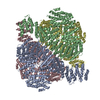



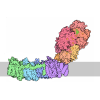

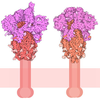






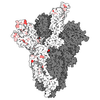

 Z (Sec.)
Z (Sec.) Y (Row.)
Y (Row.) X (Col.)
X (Col.)






